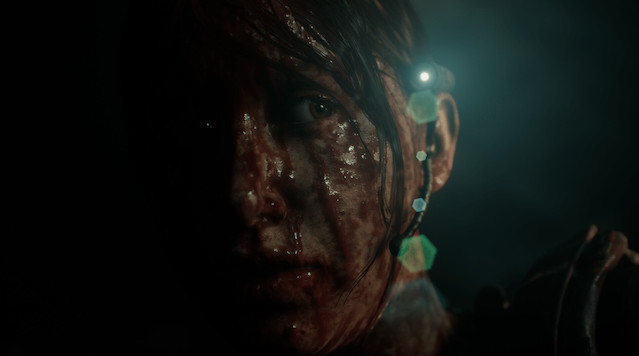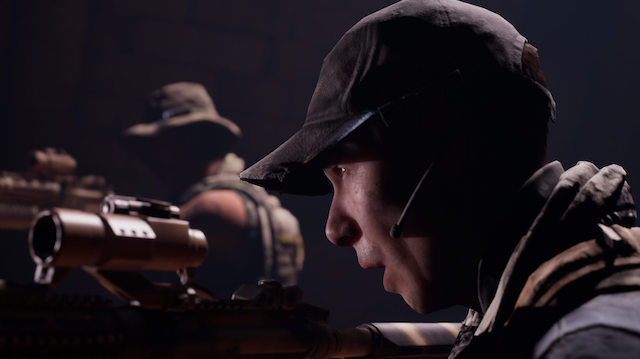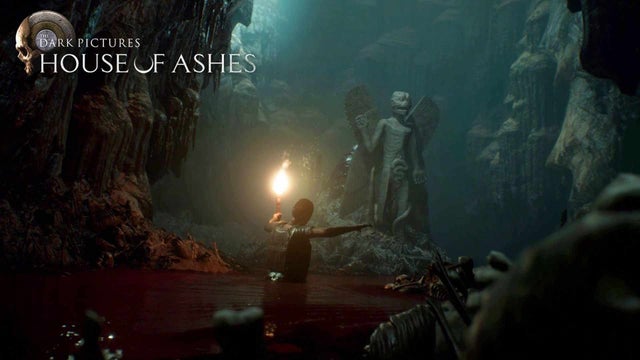The Dark Pictures Anthology has now delivered its first three games in a series that, if Supermassive has its way, may spawn a total of eight. Conceptually, it’s a series I root for. I’d love for there to be a superb horror anthology with something to look forward to every Halloween.
The Dark Pictures hasn’t quite risen to superb just yet though, and its latest entry, House of Ashes, isn’t the one that’s going to take it there. This military-horror, set to the interesting backdrop of the 2003 invasion of Iraq, makes considerable progress as a game, but its movie-like script still lacks a few final pieces that would earn it equal praise as a story.
House of Ashes Review: A Bright Spot For The Dark Pictures

In House of Ashes, players once again take on the role of five different characters. Most of them are U.S. soldiers using emerging technology that intends to help them find Sadaam Hussein’s fabled WMDs. When — surprise —no WMDs are found and the tech proves faulty, those responsible can hardly be reprimanded before the entire group finds themselves sinking hundreds of feet below the earth.
As it turns out, the firefight they had with the Iraqis above gave way to secret Sumerian ruins buried beneath centuries of civilization. It would be bad enough if they were just sunken into the earth with no easy way out. It’s made worse when soldiers from the Republican Guard are down there with them. Worst of all, something is lurking in the shadows and picking off soldiers regardless of their uniforms.
This opening act is the strongest yet in the anthology. The choice to pull the series back in time to 2003 and touch on something as controversial as the second Iraq War is a bold one, and Supermassive uses it in good faith to tell a story about the two sides working together to defeat a common (and otherworldly) enemy.
Those themes end up feeling a bit vapid, however, because House of Ashes suffers from the same issue all Dark Pictures games do: uninteresting characters.
Like Shawn Ashmore and Will Poulter before her, Ashley Tisdale serves as the familiar face for this round of Supermassive’s horror stories, and though she does a good job of breaking away from her Disney Channel roots, none of the interpersonal drama is intriguing enough to reel in players as much as the action itself.
For such a movie-like game, that’s an issue.
Tisdale’s love triangle story is built on cliches early and often. A hamfisted, melodramatic discussion of who loves whom as the group fears for their lives feels like absurdly bad timing. It could almost be taken as comedy, except this game is self-serious at all times. The rah-rah marines find an ally in one of the Iraqi soliders stuck in the hell with them, but it feels just as predictable.
You’ll hear a lot about the unjust invasion, but it doesn’t go deeper than a talking head segment between ad breaks for life insurance. You’ll learn how the Iraqi soldier has a son, but this feels like a cheap shortcut to get players to care about the character. A lot of the characters suffer from similar tropes. You know right away which characters are merely redshirts who won’t last beyond the first few minutes.

Thankfully, the actual gameplay of House of Ashes represents the best this series has been. If you’ve played any of these games (or Until Dawn) before, you know the setup already; it’s third-person cinematic gameplay with a heavy dose of QTEs and tough dialogue decisions in a story where anyone can die.
Where House of Ashes improves on this familiar formula is in several places. For one, the camerawork is much improved. Past games in the series have gone all-in on fixed camera angles to better resemble a Hollywood production. House of Ashes ditches that for a more fluid over-the-shoulder camera, albeit panned back a bit more than other games.
This cuts way down on the awkward and jerky movements the series has sometimes been known for. Now you can better see where you’re going — well, from a camera angle perspective anyway. It’s still dark in the caves, after all.
Another improvement Supermassive has made is to include better difficulty levels that can ratchet up the tension in quick-time events and be generally less forgiving of your actions. I played most of the time on the default difficulty, but when that meant I beat the game without losing any of my characters in a game that delights in its hard choices, I went back and tried it again on hard, only to enjoy my time much more because the stakes felt excitingly higher.
Above all, the best thing House of Ashes does differently is how it implements its mechanics. So often in past games of this kind, your heaviest decision always came down to actions. Do you choose to save this character or that one? Do you tell the truth or lie? Choices in these games are always active ones that demand participation. In House of Ashes, there are more opportunities to do something pivotal by committing to inaction.
In my favorite instance of this, my refusal to sever ties with a particular character, even as it seemed to doom another if I did not act, eventually became the reason why both of the characters survived my story. There are several instances of this. Not firing a gun even though the game prompts you to and gives you a short timer is another fun recurring inaction. If you can consider a moment’s context, not just its instructions, you’ll often idle into the best outcome.
It demands you participate in the story, not just follow the on-screen prompts. It harkens back to my favorite scene in last year’s Little Hope, only then I acted wrongly and got someone killed. In House of Ashes, I feel rewarded for paying close attention and knowing when to show some trigger discipline, both literally and figuratively.
Because it looks gorgeous — as in, one of the best-looking games of the year —and it remains fun to play in co-op mode, I do find House of Ashes passes as a stand-in for your next horror movie marathon pick. At about five to six hours long per playthrough, it will probably take more than one night to beat it, but a few groan-inducing character decisions don’t make it unplayable, just unfulfilled.
House of Ashes Review — The Bottom Line
Pros
- Improved, more considered gameplay moments
- Better camerawork cuts way down on jank
- Lovely visuals in every frame
Cons
- Characters aren’t intriguing
- Story sets up for interesting commentary, then falls on tropes
In all, House of Ashes feels marginally better than Little Hope, which I felt was certainly better than Man of Medan. That means The Dark Pictures entries are, by my measure, on an upward trajectory, and I sincerely hope Supermassive is able to make more of them.
While I don’t think this series has achieved its full potential yet, I think it’s just one really great script away from achieving that. As a game, The Dark Pictures is in a great place now. As a script, this third entry in the series goes for The Descent and winds up only decent.
[Note: Supermassive Games provided the copy of The Dark Pictures Anthology: House of Ashes used for this review.]







Published: Oct 20, 2021 01:45 am